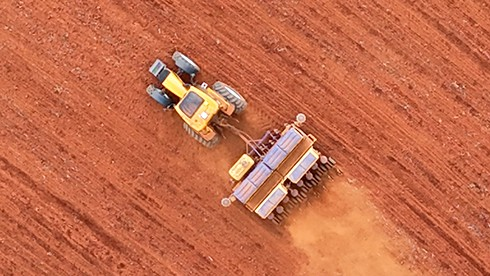In the world of modern agriculture, precision is paramount. As we navigate various challenges such as fluctuating market demands and the need for sustainable practices, the implementation of an automatic steering system has emerged as a crucial tool. At CHCNAV, we understand the significance of these systems in enhancing farming operations, and we want to share why they are indispensable for today’s agricultural landscape.
Enhancing Navigation Accuracy
One of the primary benefits of an automatic steering system is its ability to enable accurate navigation across diverse agricultural terrains. Farming landscapes can vary widely, from undulating hills to flat fields, and each presents unique challenges. With an automatic steering solution, farmers can effortlessly follow multiple guideline patterns, ensuring that every pass is precise.
This accuracy is not merely about keeping the rows straight; it directly impacts crop yield and health. By minimizing overlaps and gaps during planting and harvesting, we can ensure that the crops receive the right amount of nutrients and care. This level of precision helps in maximizing productivity while minimizing waste.
Cost Efficiency Through Optimal Resource Use
In today’s economy, managing costs is critical for any agricultural operation. An automatic steering system significantly reduces input costs by ensuring optimal seed and fertilizer placement. When every seed is sown in the right location, and fertilizers are applied precisely where needed, farmers can avoid unnecessary expenditures.
Moreover, by enhancing efficiency in operations, we can reduce fuel consumption, which is another vital cost factor in farming. The system’s ability to work consistently and accurately translates not only to better resource management but also to improved overall profitability for farming enterprises.
Real-Time Monitoring and Control
Our NX612 model at CHCNAV takes the functionality of an automatic steering system to the next level with its ISOBUS compliance. This feature allows seamless communication between the tractor and various farm implements, enabling real-time monitoring and control.
Farmers can track their operations from a centralized system, making it easier to adjust settings on the go. This capability enhances the overall management of farming tasks, leading to more informed decision-making. Being able to monitor performance in real-time means that any issues can be addressed promptly, ensuring that operations run smoothly.
Benefits Beyond the Field
The advantages of implementing an automatic steering system extend beyond immediate farming tasks. By adopting advanced technology, we position ourselves to meet the growing demands for sustainable agriculture. With more precise farming methods, we contribute to reducing the environmental impact of agriculture. Efficient use of resources leads to less runoff and better soil health, fostering a more sustainable approach to farming.
Furthermore, as we embrace technology, we also enhance our competitiveness in the agricultural market. Farmers equipped with modern tools can respond more adeptly to market changes and consumer demands, ensuring they remain relevant in a rapidly evolving industry.
Conclusion
In conclusion, the integration of an automatic steering system like the ones offered by CHCNAV is essential for anyone looking to enhance their agricultural practices. From improved navigation accuracy and cost efficiency to real-time monitoring and sustainable farming methods, these systems provide a range of benefits that can significantly impact farm productivity and profitability. As we continue to face the challenges of modern agriculture, investing in technology such as automatic steering systems will be key to ensuring success in the years to come.



